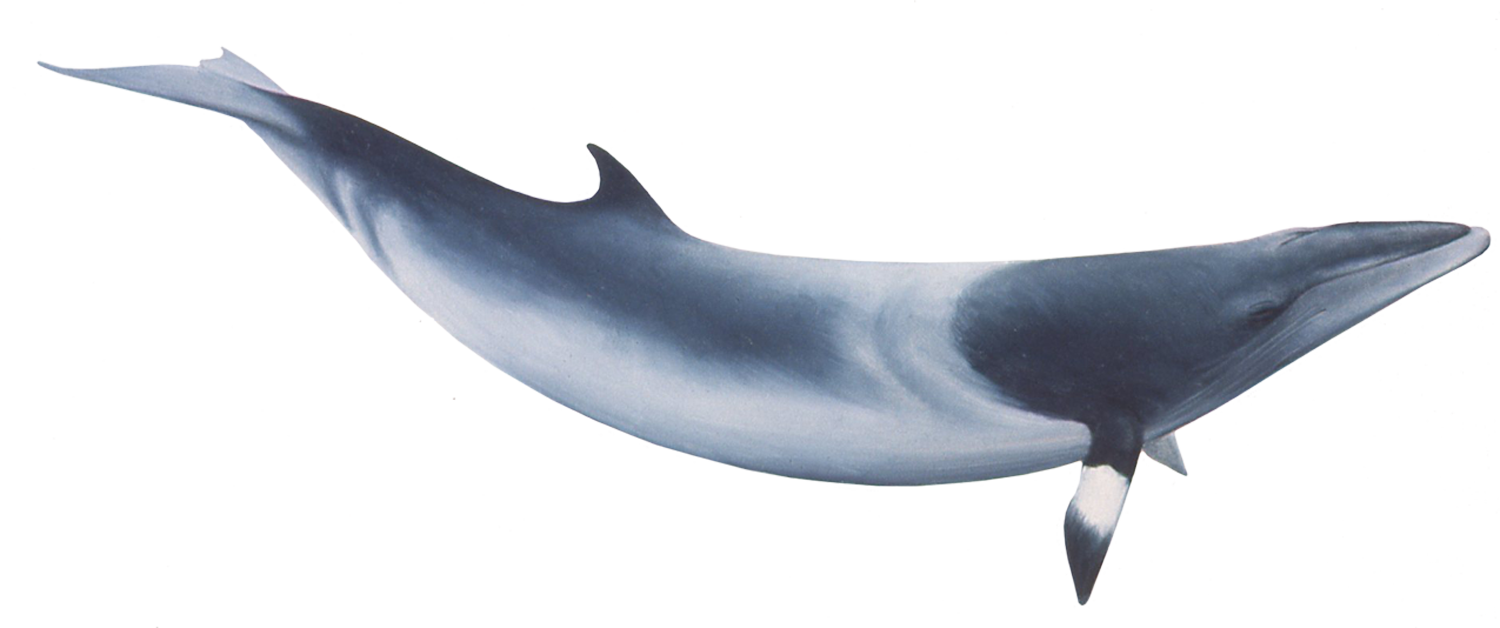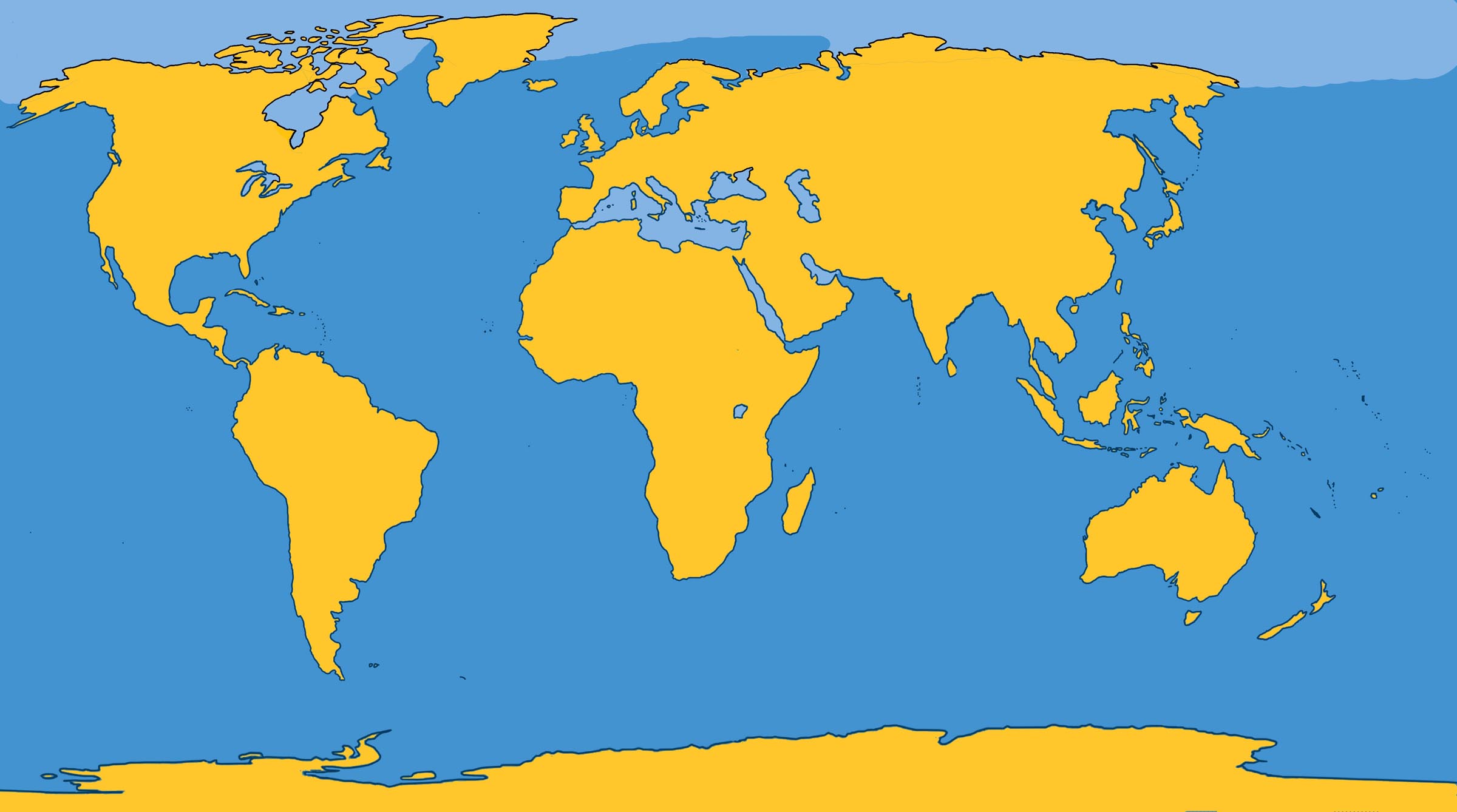 Family: Balaenopteridae
Family: Balaenopteridae
Genus: Balaenoptera
Species: B. acutorostrata Lacépède, 1804
Taxonomic Notes: Minke whales inhabiting the waters around Sri Lanka are occasionally classified as Balaenoptera acutorostrata thalmaha. Those inhabiting the Southern Hemisphere, with a gray instead of white patch on the flippers, are occasionally classified as Balaenoptera bonaerensis. Some researchers also believe that a smaller variety be given its own species identification as a dwarf minke whale, although this is part of the confusion and disagreements among taxonomists.
The smallest of the rorqual whales, the minke is not much larger than the largest of the dolphin family, the killer whale. Unlike most other rorquals, minke whales will approach and swim around small boats and ships at sea. Minke whales are often observed leaping clear of the water, exposing their entire bodies, and on at least one occasion a minke was seen riding the bow wave of a ship in much the same way a dolphin would. Nonetheless, it is a difficult whale to observe at sea, for its blow is quick and inconspicuous.
Physical Description: The rostrum is pointed with the lower jaw protruding. The forehead has a single, prominent, convex ridge from the tip of the rostrum to the blowhole.
Color: The dorsal region is black from the tip of the rostrum (occasionally including the lower lips) to just behind the flippers, merging to a slightly lighter shade which gradually becomes black again at the flukes. The ventral region is white from the throat to the anus. The flippers are black with a distinctive white band which varies in intensity with individuals and geographic location. The dorsal fin is black. Most Pacific animals have a light gray chevron extending from flank to flank just above the flippers.
Fins and Flukes: A well-developed falcate dorsal fin is situated about two-thirds back on the body. The flippers are long, thin and pointed at the tips. The flukes are large, thin, and pointed at the tips, with a definite median notch.
Length and Weight: Minkes grow to about 30ft (9 m) and 10 tons (9,000 kg). Southern Hemisphere animals are slightly larger than their Northern Hemisphere counterparts.
Throat Grooves: Fifty to 70 ventral grooves are present, extending from the chin to near the navel.
Baleen Plates: Minkes possess between 280 and 300 creamy white plates on each side of the upper jaw, sometimes fringed with dark brown. They reach a length of about 11 in (28 cm).
Feeding: Small shoaling fish (herring, cod, capelin, pollack), krill, and copepods.
Breathing and Diving: They take 5 to 10 breaths between shallow dives, preceding a longer, presumably deeper dive lasting up to 10 minutes. Before the longer dive, the animal arches its back but does not expose its flukes. The blow is quick and inconspicuous.
Mating and Breeding: A 10 ft (3 m), 1,000 lb (450 kg) calf is born after a gestation period of between 10 and 11 months. Mothers lactate less than 6 months. Sexual maturity is attained at about 6 years when the males are 23 ft (7 m) and the females 24 ft (7.3 m). Females are thought to bear young every other year.
Herding: They are usually found alone but often observed in small groups of up to 6 animals.
Distribution: Minkes are found in all oceans, with concentrations in temperate waters. They are rarely observed in the tropics.
Migration: Minkes are inshore animals, although they occasionally venture into the open ocean. Herds occur in higher latitudes during summer; they return to warmer waters during winter.
Natural History Notes: Minkes are believed to live as long as 50 years. At times they can be extremely inquisitive, approaching small boats closely enough to be touched.
MINKE WHALE DISTRIBUTION





